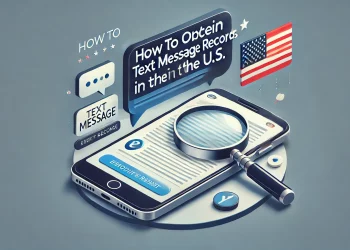In today’s fast-paced digital world, grabbing consumer attention is key. Text-to-vote campaigns are becoming popular. They let people vote in real-time via SMS. This boosts engagement, gets feedback, and increases product popularity. Let’s examine how these campaigns can transform the landscape for U.S. businesses.
Understanding Text-to-Vote Campaigns
Text-to-vote campaigns let people vote by texting. They send a specific keyword to a short code or number. This method is used in:
- Television shows: Shows like American Idol use it, getting over 600 million votes by their 11th season.
- Political campaigns: Candidates like Beto O’Rourke use SMS polls to find and mobilize supporters.
- Market research: Companies use SMS polls to get consumer insights quickly.
Why Text-to-Vote Resonates with U.S. Consumers
Several reasons make text-to-vote campaigns effective in the U.S.:
- High mobile penetration: Many Americans own mobile devices, allowing SMS campaigns to reach a broad audience.
- Immediate engagement: Text messages have high open rates, leading to quick interaction.
- Simplicity: Texting is manageable, making it accessible to people of all ages and backgrounds.
Real-World Success Stories: Text-to-Vote Campaigns in Action
Let’s examine some examples of text-to-vote campaigns that were successful. They engaged people and got great results.
1. Postino WineCafé’s ‘Battle of the Bruschetta’
Postino WineCafé, a U.S. restaurant chain, ran the ‘Battle of the Bruschetta‘ campaign. It lets customers choose their favorite bruschetta flavor.
Campaign Overview
- Objective: Find out what customers like best to update the menu.
- Mechanism: Customers texted a keyword for their favorite bruschetta to a number.
- Promotion: Signs and staff encouraged voting, showing how it affects the menu.
Results
- Increased engagement: Customers felt their opinions mattered, influencing the menu.
- Data collection: The campaign gave valuable insights into what customers want.
- Sales boost: Highlighting top choices led to more orders of those bruschetta flavors.
2. San Juan Seltzer’s Summer Sweepstakes
San Juan Seltzer, a hard seltzer brand from the Pacific Northwest, ran a summer promotion. It was in Idaho, Oregon, and Washington. The goal was to capture summer’s spirit and boost sales.
Campaign Highlights:
- Text-to-Win Mechanism: Participants could text “SANJUAN” to win prizes, including a Ronix Wakesurf Board and a trip to the San Juan Islands.
- Retail Engagement: Retailers got more cases to sell in exchange for the promotion. This led to more in-store displays and sales.
- Social Media Integration: The campaign utilized social media to disseminate information and encourage more people to get involved. This helped grow followers and visibility.
- Data Collection: Participants shared their details, like name and email. This gave San Juan Seltzer valuable insights.
Results:
- Sales soared, with some stores selling up to 500 cases.
- Many people entered the sweepstakes, boosting brand engagement.
- The campaign also grew social media followers and helped understand retailer performance.
3. Voto Latino’s “Text2Represent” Initiative
In 2006, Voto Latino started “Text2Represent,” a text messaging voter registration campaign. Co-founder Rosario Dawson believed that text messaging could mobilize people to vote.
Campaign Highlights:
- Voter Registration via Text: It made registering to vote easy through text messages. This appealed to a tech-savvy audience.
- Targeting Young Voters: The campaign aimed to engage Latino youth in the political process.
- Multimedia Outreach: It used PSA videos with Latino artists to encourage voting.
Impact:
- It was a first in using text messaging for politics.
- It paved the way for digital voter engagement strategies.
4. “Get Your Booty to the Polls” Campaign
In 2020, the “Get Your Booty to the Polls” campaign aimed to get Black men to vote. It used exotic dancers to illustrate the importance of voting.
Campaign Highlights:
- Creative Messaging: Unconventional spokespeople grabbed attention and sparked conversations.
- Educational Content: The dancers explained how to vote, making it easier.
- Viral Reach: The message went viral on social media, spreading far and wide.
Impact:
- It raised awareness about voting among a specific group.
- It showed that creative messaging can mobilize voters.
Implementing Your Own Text-to-Vote Campaign
To start a successful text-to-vote campaign:
- Choose a reliable SMS platform: Use platforms like SimpleTexting or CallHub for easy management.
- Define clear objectives: Know what you want to achieve, like feedback or interest in a new product.
- Craft compelling messages: Make your call-to-action clear and engaging.
- Promote across channels: Utilize social media, email, and in-store signage to reach a wider audience.
- Analyze and act on the results: Use the data to make informed business decisions and share the findings.
Best Practices for Successful Campaigns
- Ensure compliance: Follow rules such as the Telephone Consumer Protection Act (TCPA) to maintain trust and avoid fines.
- Timing is crucial: send messages when it’s most likely to elicit a good response.
- Personalize where possible: Customized messages can boost engagement and make people feel valued and special.
- Offer incentives: Consider offering discounts or rewards to encourage more people to participate.
Overcoming Common Challenges
- Managing opt-outs: Always make it easy for people to stop getting messages and respect their choices.
- Avoiding message fatigue: Don’t send too many messages to avoid overwhelming your audience.
- Handling technical issues: Select a platform with reliable support to resolve any problems promptly.
The Future of Text-to-Vote in Marketing
Technology continues to improve, and text-to-vote campaigns will play an increasingly significant role in marketing. Here are some trends and predictions:
Integration with AI and Personalization
Artificial Intelligence (AI) is transforming the way businesses interact with customers. By incorporating AI into text-to-vote, companies can gain insight into voting patterns and send personalized messages. This makes the experience better and boosts engagement.
Expansion Beyond Traditional Sectors
Text-to-vote isn’t just for entertainment and politics anymore. Retailers can use it to pick new products or offers. Healthcare can get feedback from patients through text polls. Text-to-vote works in many areas.
Enhanced Compliance and Security Measures
There is a strong emphasis on maintaining data security and adhering to regulations. Future text-to-vote systems will utilize better encryption and adhere closely to the laws. Keeping user data safe is key.
Integration with Multimedia and Rich Content
MMS lets campaigns send more than just text. They can include images, videos, or interactive content. This makes voting more fun and informative.
Conclusion
Text-to-vote campaigns are an effective way to engage people and gather valuable feedback. They help businesses sell more, encourage people to register to vote, and raise awareness about significant issues. This method uses text messages to reach people quickly and effectively.
Examining successes like San Juan Seltzer’s summer sweepstakes and Voto Latino’s “Text2Represent” campaign, we can glean valuable insights. These examples demonstrate how to create text-to-vote campaigns that genuinely connect with people.
As technology improves and people seek more interactive experiences, utilizing text-to-vote can give you a competitive edge. It helps you build stronger relationships with your audience.














